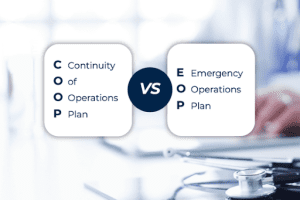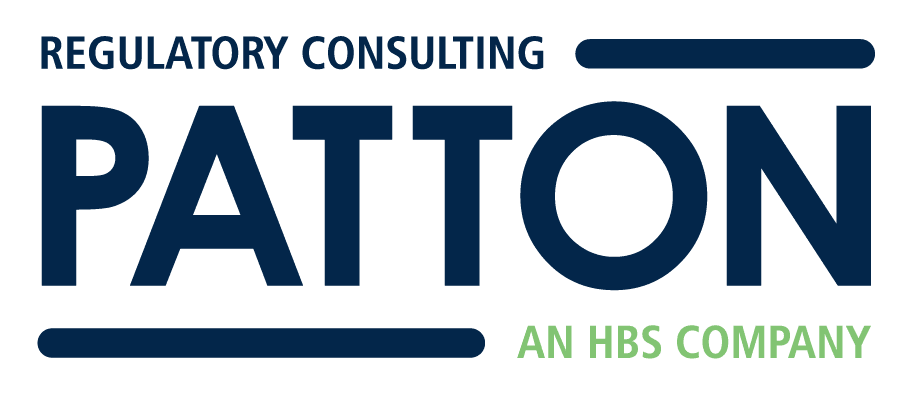The Joint Commission’s Emergency Operations Plan vs. Continuity of Operations Plan: Do You Know the Difference?
When a natural disaster, a power outage, a public health emergency, or other crisis strikes, hospitals must be ready to respond. But true readiness goes beyond the immediate response. It also requires long term planning. How will your hospital continue to function when the worst-case scenario becomes reality?
The Joint Commission’s Emergency Management (EM) standards, along with CMS regulations, require hospitals to have a comprehensive framework for managing emergencies. Within this framework, two terms often cause confusion: the Emergency Operations Plan (EOP) and the Continuity of Operations Plan (COOP).
While they are closely related, they are not the same thing. Understanding the critical differences will ensure your hospital can continue to provide safe, effective patient care no matter what.
What Is an Emergency Operations Plan (EOP)?
Joint Commission has a standard within the EM chapter on Continuity of Operations planning. A business continuity plan was required under the CMS CoPs for EM, effective 11/15/17. The TJC customer SAG in 2018 added language about requiring hospitals to make available their continuity of operations plan as required by the new EP for EM.02.01.01. In the 2026, the standard requiring a continuity of operations plan is EM.09.01.01 EP 1 And EM.13.01.01.
A comprehensive EOP typically includes:
- Hazard Vulnerability Analysis (HVA): Identifying potential threats and risks.
- Incident Command System (ICS): Defining roles and responsibilities during an emergency.
- Communication Plan: Ensuring internal and external communication channels remain operational.
- Resource and Asset Management: Managing medical supplies, personnel, and logistics.
- Patient and Clinical Support Activities: Ensuring continued patient care during crises.
- Evacuation and Shelter-in-Place Plans: Protocols for different emergency scenarios.
- Training and Drills: Regular testing to ensure readiness.
What is a Continuity of Operations Plan (COOP)?
If the EOP is the immediate response, the COOP is the long-term strategy. The Continuity of Operations Plan is focused on ensuring that your hospital’s essential functions can continue to operate during and after a disaster, even if your physical facility is damaged or inaccessible, and getting back to normal operations as quickly as possible.
The Joint Commission and CMS specifically require certain elements of a COOP, including:
- Leadership Succession Planning:
For example, the CEO is unavailable and isn’t coming back. Hospital leadership is sometimes reluctant to share this information. The details don’t need to be in the COOP, but we need to know that the information is available and locked in a safe in administration, etc. - Delegation of Authority Planning:
For example, who signs the checks and authorizes charges if the CFO is unavailable.
Beyond these core requirements, best practices outlined in resources like the NFPA 1600 Standard on Continuity, Emergency, and Crisis Management and Administration for Strategic Preparedness and Response (ASPR) recommend that a comprehensive COOP also include:
- Staffing continuity
- Mission essential functions
- Recovery time objectives
- Recovery plans
The Bottom Line
While the COOP and EOP are distinct, they often complement each other. The EOP focuses on immediate emergency response, whereas the COOP ensures operational continuity during and after a crisis.
Need Help With Emergency Planning
Patton Healthcare Consulting specializes in helping hospitals navigate complex regulatory requirements from The Joint Commission, CMS, and other accrediting bodies. Contact us if you need assistance in developing, evaluating, or refining your Emergency Operations Plan or Continuity of Operations Plan.


Leave a Reply